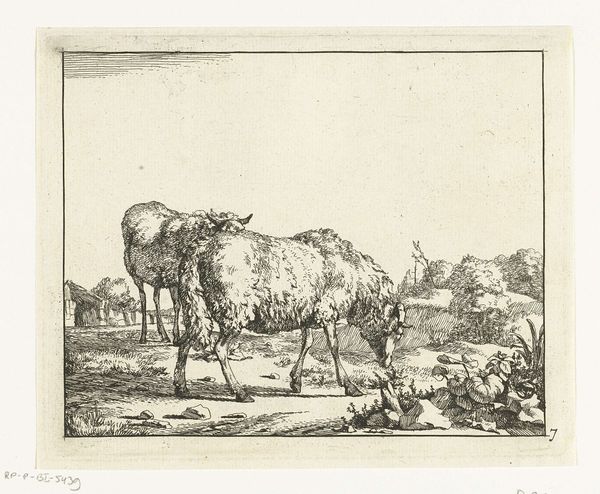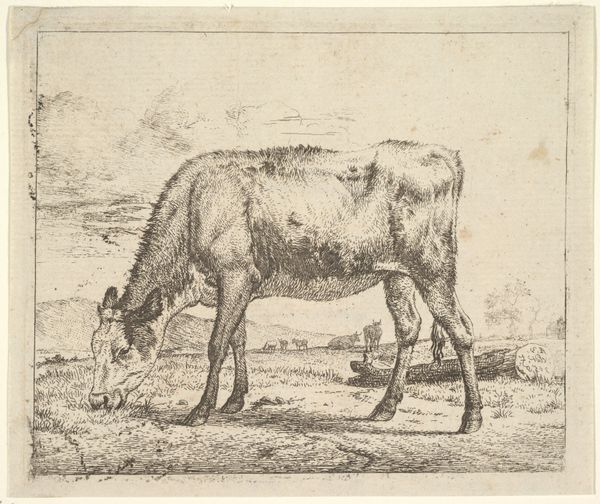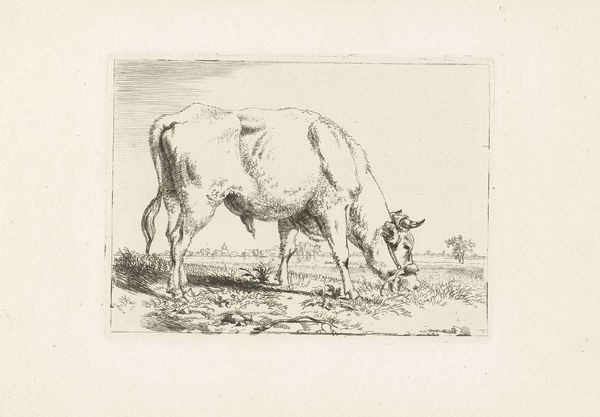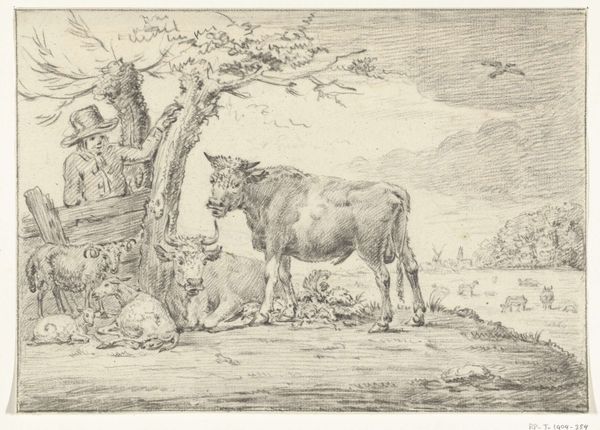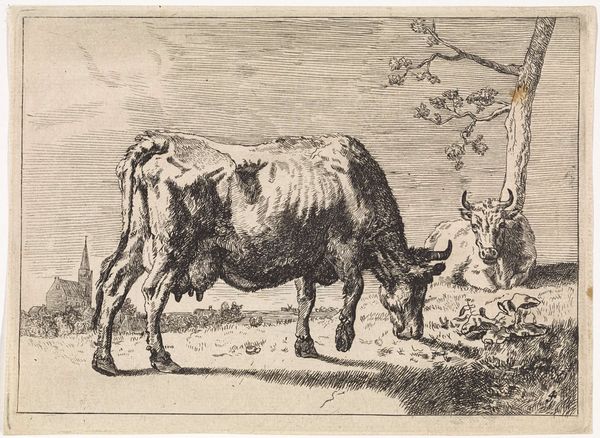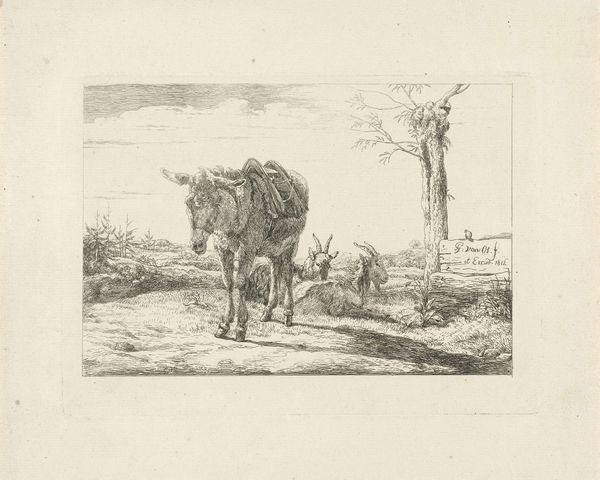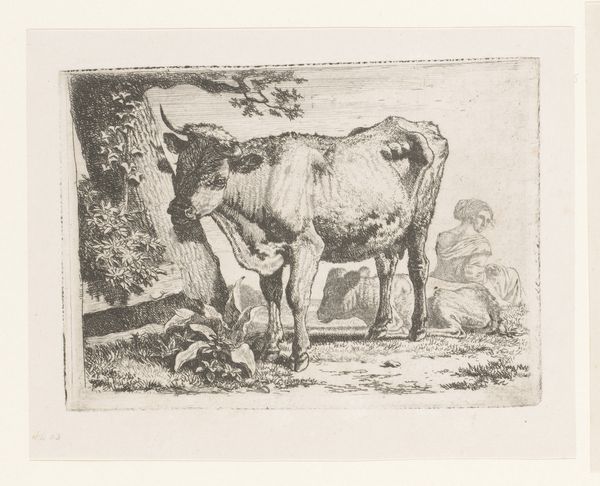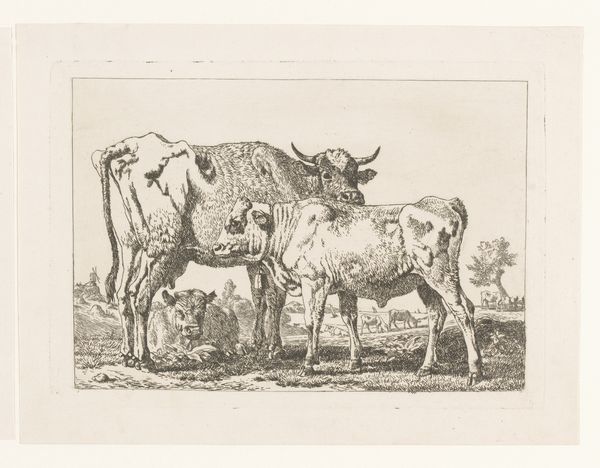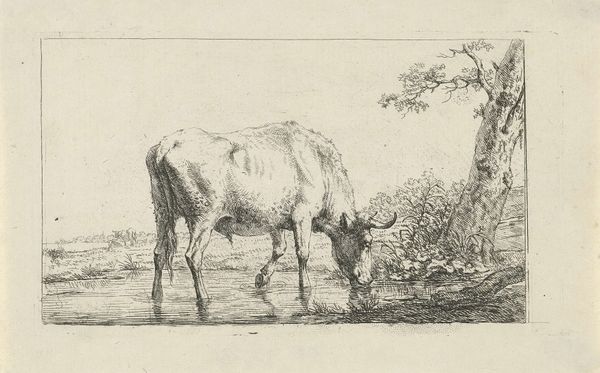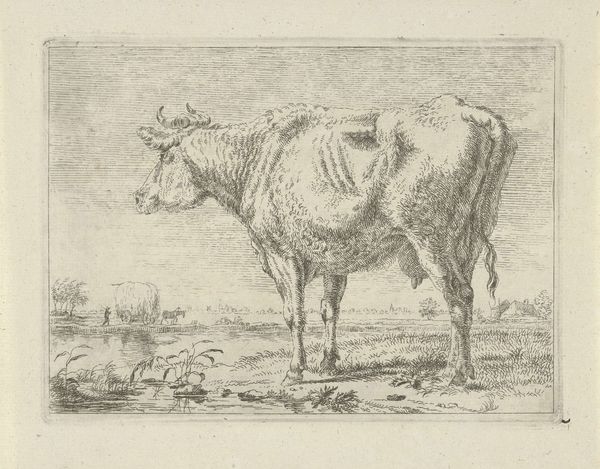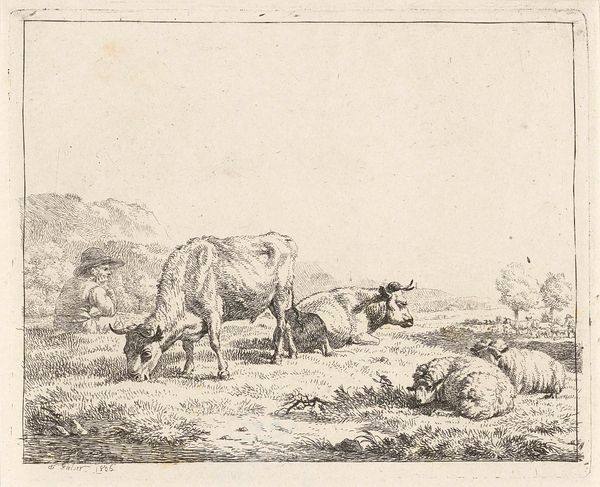
print, etching
# print
#
etching
#
old engraving style
#
landscape
#
genre-painting
#
realism
Dimensions: height 103 mm, width 170 mm
Copyright: Rijks Museum: Open Domain
Editor: This is "Landscape with a Cow and Goat near a Spinner" by Jean Louis Demarne, dating sometime between 1762 and 1829. It's an etching, giving it a sort of aged and delicate feel. It feels almost like looking into a past world, everything depicted feels quite serene, a peaceful simplicity about it. What catches your eye about this piece? Curator: The most striking thing is how it represents the complex interplay between the idealized pastoral life and the realities of labor in the 18th and early 19th centuries. The woman spinning wool, seemingly unburdened by the supposed hardships of rural existence, next to farm animals in what we now may regard as "quaint"—but, for those times, this genre painting may have carried a lot of political message! Editor: Political? How so? It seems a pretty straightforward depiction of country life. Curator: Well, think about the intended audience and how they would have perceived these kinds of scenes. Was Demarne trying to romanticize rural labor, potentially obscuring the social and economic disparities present at the time? How much artistic agency do we really give to works, especially prints like these? They usually come with very charged sociopolitical landscapes. Editor: That makes me consider it from an entirely new angle. The idealized portrayal, perhaps meant to appease the elite rather than reflect reality. Curator: Exactly. Now think of the museums it might have ended up hanging at and the impact it creates when portraying something so mundane. Editor: It’s incredible how a simple image can hold such a complex history and meaning. I’ll definitely be thinking about that when I see similar genre paintings now. Curator: Indeed. The political economy of art is ever-present, whether it explicitly seems that way or not.
Comments
No comments
Be the first to comment and join the conversation on the ultimate creative platform.
